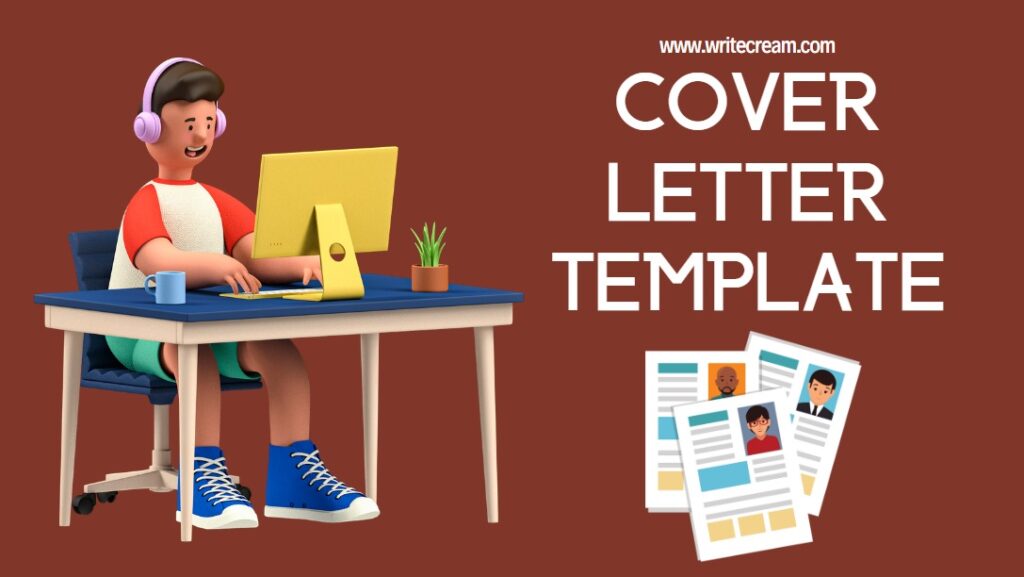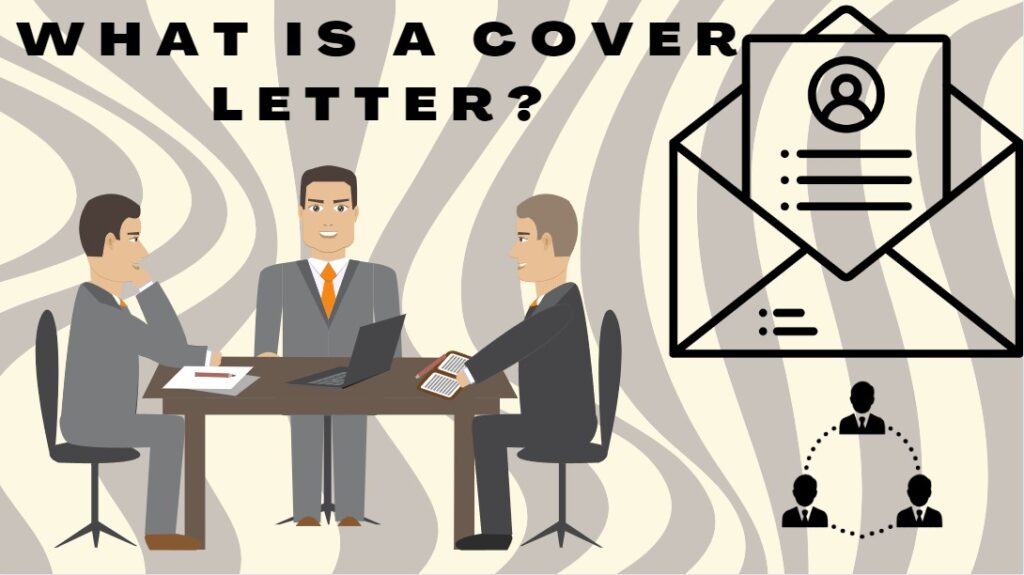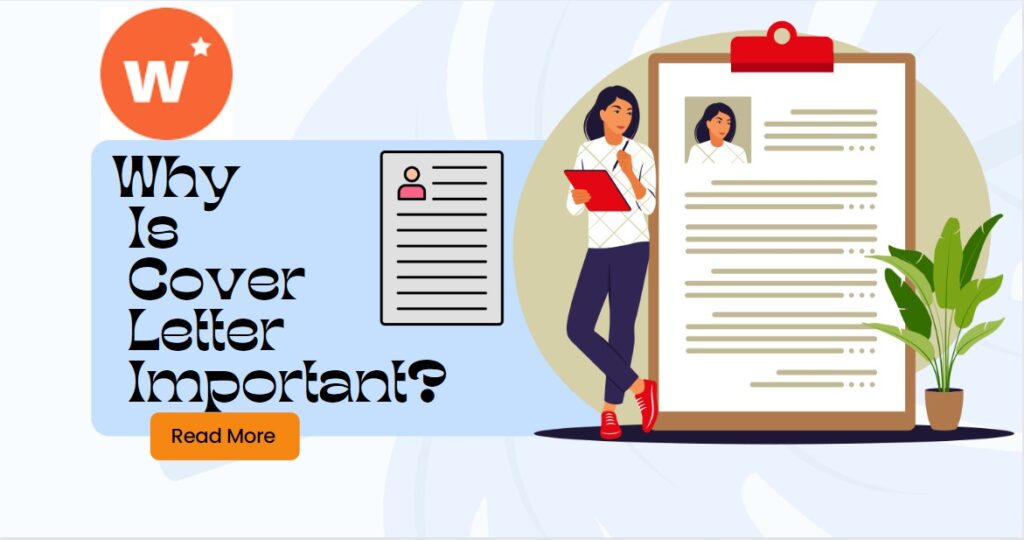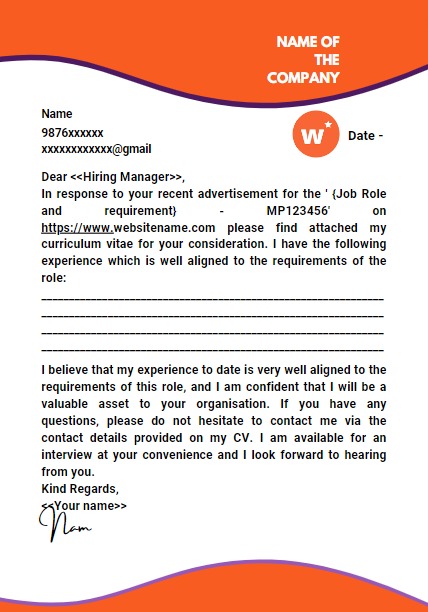
When you apply for a position at a company, you need to submit a resume as part of the application process. Some companies may additionally want you to include a cover letter with your CV. It will outline your qualifications for the job. However, a cover letter might not be required for some positions. But it’s typically a good idea to include one with any application you submit. Consider your cover letter as a pitch, a means to introduce yourself professionally and highlight the benefits you could provide for the position you’re applying for. Plus, this is your chance to demonstrate your interest in the position and your knowledge of the business or organization. We will explore what a cover letter is, and why it is important along with a template in this article.
Here’s the link for Cover Letter Template
What Is A Cover Letter?
A cover letter is a piece of writing typically included with a job application that summarises the applicant’s qualifications and interest in the position. A cover letter is sometimes one of just two documents given to a potential employer. Therefore its quality will determine whether or not the candidate is contacted for an interview. A strong cover letter enhances a CV by elaborating on points that are pertinent to the position. Essentially, it’s a sales pitch outlining why the applicant is the most qualified for the job. Career experts encourage job seekers to take the time to individually create each CL for the specific opportunity rather than sending out a mass mailing.
To emphasize that you have done your study for the position and are eager to join the team, you should explicitly match your qualifications, pertinent abilities, and prior experience with the job description in the CL.

Why Is Cover Letter Important?
Even while it takes more work, it may be quite beneficial in helping a candidate stand out from the crowd. A strong cover letter tells the hiring manager more about the applicant’s experience and personality. On the other hand, a poor cover letter can result in your application being shredded without even being read. Therefore, it’s crucial to understand how to write a persuasive cover to ensure that this doesn’t happen.
Before you have the chance to speak with the hiring manager in person, the cover letter allows you the ability to go into more detail about your experience. It clarifies your connection to the person who recommended you. You can be in a situation where you’ve used networking to your advantage to get a job. How you met your reference and what made you decide to apply are both covered in the cover letter. An employer could still require a CL for the hiring manager to consider if you apply for a job without one and are still invited for an interview. Although it is unlikely, it is still a possibility. Even if a position specifically states that a CL is not necessary, you still need to have one ready.

Cover Letter Template
The two key documents that a candidate delivers to an employer are typically the resume and cover letter. Cover letter templates will assist you in creating the ideal application, whether you are seeking a promotion or have recently graduated from college. You can use the components listed below to make your cover letter template.
1. Read Job Description
Typically, a job description will include a list of the ideal candidates. This can assist you in assessing your suitability for the position. Pay close attention to any application guidelines that may be included in the description as well. This stage displays the materials they must examine before taking your application into account. You’ll still need to follow the procedures outlined in the job description, even with a recommendation.
2. Demonstrate Your Research
Your level of interest in the position will be shown by your ability to articulate to an employer your knowledge of the company’s history, industry, and activities. The hiring manager will perceive a candidate as being more devoted if they have made an effort to learn more about the organization and have mentioned this in their CL. Be sure to browse the corporate website. Learn as much as you can about the company’s culture. Also, be prepared to talk about the history and development of the organization.
3. Convince Them To Hire You
It’s crucial to examine why you would be the ideal candidate and express this in your CL because the majority of top candidates will be experienced and dedicated experts. Highlight your prior successes and any other abilities that, if you were hired for the position, would help the company.
4. Highlight Your Skills
Include any unique qualities or personality traits that make you a better fit for the position and appeal to a hiring manager. Transferable abilities can help establish your appropriateness for a role. Be sure to emphasize your accomplishments if you have achieved outstanding results in a position similar to this one. To display the work you’ve done throughout your career, create a portfolio. Additionally, you may attach a copy of your résumé, which enables the company to view everything on a single page. If you’re selected for an interview, think about bringing a printout of your portfolio to show the hiring manager.
5. Ensure That It’s Neat
A typed, one-page, flawless cover letter is required. No matter how experienced you are, your CV will very soon end up in the “no pile” if your CL has spelling errors. So, before submitting your CL to the company, always verify that it is error-free using AI tools or on your own.

Conclusion
Although it can be difficult to know where to begin, a cover letter often makes or breaks a job application. You can be guaranteed to write a cover letter that will give your CV life by using the template in this post, the top tips, and both. Make sure to include your name and contact information in the cover letter. It should contain three to four paragraphs and highlight any noteworthy accomplishments or experiences that make the applicant especially qualified for the position.



Good day! I simply want to give you a huge thumbs up for your excellent info you have here on this post. I am returning to your web site for more soon.